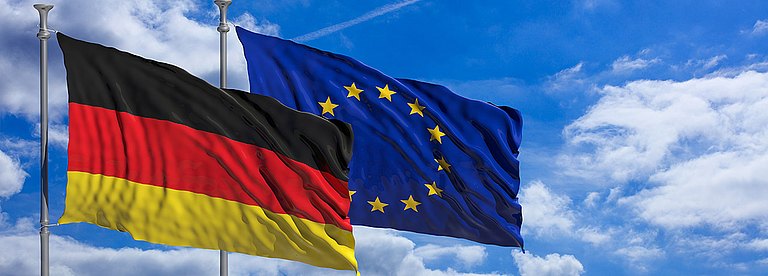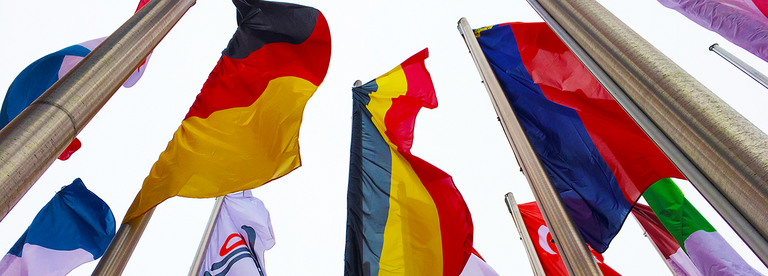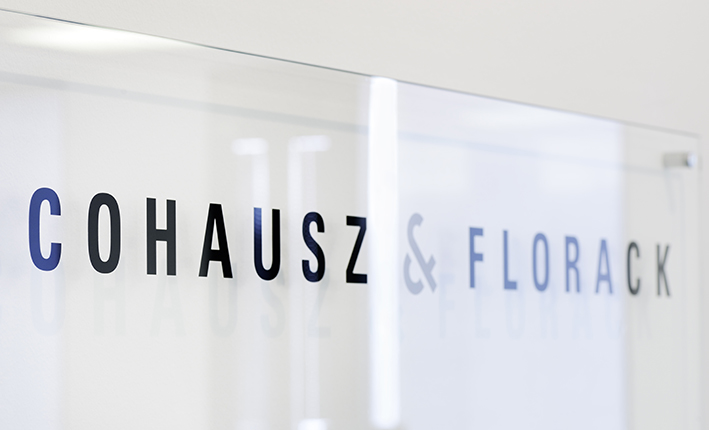In summary
This article discusses the recent implementation of legislative reform in the country’s national patent law and the launch of the new European Unified Patent Court (UPC). We highlight the importance of Germany as a litigation venue for protecting innovation. On the European level, there have been interesting new EU legislative reform proposals, not only in the areas of patent law but also regarding supplementary protection certificates and FRAND licensing, as well as two important decisions of the EPO Enlarged Board of Appeal on plausibility (G 2/21) and priority (G 1/22 and G 2/22).
Discussion points
- Launch of the UPC
- New criterion for injunctive relief claims against infringers
- Supplementary protection certificates
- Compulsory licensing
- Entitlement to priority (G 1/22 and G 2/22)
Referenced in this article
- German Patent Act
- 10x Genomics v NanoString
- European Court of Justice decision C-44/21
- Wärmetauscher
- Truvada
- Huawei v ZTE
Launch of the UPC
In February 2023, Germany deposited its instrument of ratification with the Secretariat of the Council of the European Union, launching the countdown for the UPC to open its doors in June 2023. The Unitary Patent and UPC system was designed to offer a simplified, efficient and cost-effective route to patent protection and litigation, obviating the need for multinational validation, invalidity or infringement proceedings. The UPC’s first patent infringement hearing took place in Germany before the Munich Local Division and resulted in the first preliminary injunction being issued in September 2023 (10x Genomics v NanoString).
Under the UPC system, Germany hosts four local divisions (Düsseldorf, Munich, Mannheim and Hamburg) and one branch of the central division (Munich). This is the highest number of UPC courts in any of the member states. Given the high importance of German courts for international patent litigation, it is expected that the four German local divisions will play a major role in the jurisdiction of the UPC. A look at the present case statistics confirms that this is already the case.
Klaus Grabinski, former judge at the Federal Court of Justice in Germany, has been appointed the president of the Court of Appeal. In all, 105 judges have been appointed: 37 legally qualified judges and 68 technically qualified judges. The technically qualified judges are experienced national patent practitioners or judges ensuring the delivery of high-quality decisions. By far the largest number of legally and technically qualified judges (over one third) comes from Germany.
In a first decision on a validity challenge, the central division in Munich assessed the admissibility of a revocation action filed by Sanofi on the same day as an infringement action was filed by Amgen at the local division in Munich in the case No. UPC_CFI_1/2023. As a general rule, a revocation action should be brought before the central division unless an infringement action between the same parties concerning the same patent has been filed before a local or regional division. In the latter case, the revocation action can only be brought before the same local or regional division. Amgen filed a preliminary objection to the inadmissibility of Sanofi’s revocation action, arguing that the infringement action was filed first, as evidenced by the information available on the CMS. The UPC judge rejected the preliminary objection, noting that Sanofi’s revocation action was filed on 1 June 2023 at 11.26 a.m., while Amgen’s infringement action was filed at the sub-registry of the Munich local division on 1 June 2023 at 11.45 a.m.; that is, less than half an hour later. This decision underscores the importance of promptly filing actions, as even small delays can have a significant impact on
the potential bifurcation of infringement and revocation actions, and ultimately influence the litigation strategy.
Preliminary injunctions without precedent first-instance opposition or nullity proceedings
Preliminary injunctions have always already been a powerful weapon in German patent litigation as they allow the patentee to obtain an injunction against a patent infringer within weeks by way of a ‘mini trial’. In addition to proving the patent infringement and the urgency of the case, the issuance of a preliminary injunction in a patent infringement case in Germany (regardless of whether before a national court or German UPC division) generally requires the substantiation of the patent’s validity. For this criterion, at least before the most important patent appeals courts in Düsseldorf, Munich and Karlsruhe, it is not enough that the patent has been examined and granted by a Patent Office. Instead, it is usually required that the patent has previously been upheld in firstinstance opposition or nullity proceedings.
After a referral of the regional court of Munich I, the European Court of Justice ruled in its decision C-44/21 in April 2022 that national case-law, “under which applications for interim relief for patent infringement must, in principle, be dismissed where the validity of the patent in question has not been confirmed, at the very least, by a decision given at first instance in opposition or invalidity proceedings”, is precluded by the Enforcement Directive. Following this decision, some German practitioners expect more preliminary injunctions to be issued from patents without precedent first-instance opposition or nullity proceedings in the future. However, most practitioners expect no substantial change in the future decisions of the German courts, as preliminary injunctions from patents without preceding validity proceedings could already be granted before in exceptional cases. Needless to say, it will be interesting to see which criteria the UPC will apply.
Following decision C-44/21, some German courts have taken a more applicantfriendly approach, while others do not appear keen to alter their previous approach to the general requirement of confirmed validity for a preliminary injunction. In view of the C-44/21 decision, actors on both sides need be prepared to present their substantive arguments on the patent’s validity in a timely fashion.
Revisions to the German Patent Act
In an effort to simplify and modernise the law and to expedite patent proceedings, the German parliament ratified a bill to revise the Patent Act, the first substantive change since 2009. The new version of the law entered into force on 18 August 2021.
Qualified opinion
One of the major changes to come with the revision is the introduction of a sixmonth period for the Federal Patent Court to provide a qualified (preliminary) opinion on the merits of a case in invalidity proceedings. Germany has a bifurcated system for national patent litigation, whereby infringement and invalidity cases arising from the same patent are handled by different courts – infringement by the civil courts and invalidity by the Federal Patent Court. Infringement proceedings can be stayed in cases of serious patent validity doubts. This occurs in about 20 per cent of cases. But under the bifurcated system, a (generally faster) civil court judgment on infringement may only be vacated much later by the (generally slower) Federal Patent Court ruling on invalidity. This scenario, which is sometimes referred to as an ‘injunction gap’, is specifically tackled by the changes to the Patent Act. These aim to better align
patent infringement and nullity proceedings by offering the infringement courts a qualified view on patent validity within a more reasonable time frame, in order to stay proceedings if necessary. Currently, the Federal Patent Court seems to be meeting the challenging six-month schedules that have been set, although this may change as the Court has experienced a drain of technical judges to the UPC and is currently understaffed in many senates.
Only time will tell whether the changes will really enhance the synchronicity of the bifurcated system or whether they will simply entail more work at the Federal Patent Court. It is undeniable that the six-month time limit places a much higher burden on the Federal Patent Court. For the parties, this also means a significantly tighter schedule to file their full arguments and evidence. Under the new law, there is a statutory two-month deadline for the patentee to present its detailed defence from receipt of the nullity complaint. Only in exceptional circumstances can this be extended by one further month. Under the new provisions, patentees are therefore advised to carefully review and prepare validity defences well in advance of starting an infringement action. Also, since it is essential for the patentee to receive a favourable preliminary opinion in invalidity proceedings in order to avoid a stay of the parallel infringement proceedings, patentees are well advised to present their complete defence against the invalidity action as early as possible in the proceedings so that the Federal Patent Court can properly consider it in its preliminary opinion. While the preliminary opinion on invalidity cases is now usually issued within the sixmonth time frame, the total duration of first instance proceedings at the Federal
Patent Court (on average about 1.5 to 2.5 years) is still much longer than for infringement proceedings (on average about 10–14 months).
New criterion for injunctive relief claims against infringers
Another change to the German Patent Act concerned one of the most prevalent tools of patent enforcement against infringers in Germany: injunctive relief (ie, a cease-and-desist order). The Patent Act states that patentees can order infringers to cease and desist from using, selling and importing, among other things, a patented technology. In its 2016 Wärmetauscher ruling, the Federal Supreme Court added an extra unwritten exclusion criterion whereby injunctive relief can be denied in exceptional cases if the court finds that it would pose a disproportionate burden or hardship on the infringer and therefore breach the fundamental principle of good faith. This principle of proportionality brought the German injunction statute in line with EU standards, and specifically the Enforcement Directive.
The proportionality test has now been codified in the new law, making the examination of injunctions more transparent. But experience has shown that there has been little change to the practical implementation of the statute. Indeed, patent practitioners do not expect the revision to change Germany’s position as one of the most patentee-friendly litigation venues in Europe.
In addition, the legal consequences in cases of disproportionate burden remain at the courts’ discretion. This means that, instead of excluding the injunctive relief, courts can decide to what extent the exclusion should apply. For example, the court may set a grace period for the infringer to implement design-arounds or to sell its remaining stores of the infringing technology – at a price, of course.
To support a fair and flexible approach while still protecting patentees’ rights, the new revision explicitly introduces a reparations clause by which the court can – in the same decision – order the infringer to pay a fair and commensurate reparation to the patent owner if a grace period is set. Importantly, this temporary exclusion of injunctive relief does not legalise the infringement for the grace period and will therefore not affect the patent owner’s claim to damages. After more than two years of experience under the new law, it seems
fair to say that patent owners can be confident that the German courts continue to be a particularly patent-friendly venue for infringement proceedings, and that injunctive relief will remain a powerful weapon in the IP arsenal of patentees
litigating their patents in Germany.
Supplementary protection certificates
Supplementary protection certificates (SPCs) for medicinal products are a form of patent extension that can be granted to compensate patent owners for the shortened effective patent life on account of the extended period that it takes for regulatory certification of such products. One of the requirements for granting an SPC is that the product must be ‘protected by a basic patent in force’. It was initially unclear, however, to what extent this applies to a product composed of several active ingredients having a combined effect, particularly when that combination is not expressly mentioned in the claims of the patent.
The German Federal Supreme Court applied the principles set out by the European Court of Justice (ECJ) in its decision C-121/17 in the German Truvada case (X ZR 172/18). In this decision, the court found that:
- the combination of two active ingredients is generally not protected by a patent where the claims consider one of those active ingredients to be optional; and
- in order to fulfil the ‘specifically identifiable’ requirement based on the prior art at the priority date, it is not enough if one of the active ingredients is neither functionally nor structurally defined.
As a take-home message for patent applicants in cases that could serve as a template for an SPC application, it is important to define any envisaged combination treatments at least non-optionally in the claims, and to make sure to either functionally or, if possible, structurally define all the active ingredients in the description.
Currently there is no centralised process for SPC applications in the EU. Instead, SPCs must be applied for through national patent offices. On 27 April 2023, the European Commission presented its proposals for the development of a more unified SPC system. The first set of proposals aims to introduce a centralised procedure for the grant of national SPCs and a single SPC database. The second set of proposals seeks to implement a unitary SPC protection for the member states participating in the unitary European patent system and a unitary examination procedure for national SPCs and SPCs in the field of pharmaceuticals and plant protection products. A uniform European SPC system would be capable of further strengthening Europe as a research location in the long term due to less bureaucracy, lower costs and less use of resources for companies when they apply for supplementary protection certificates.
Furthermore, the availability of a unitary SPC could be an additional advantage of using the UP system. However, whether the European Union Intellectual Property Office (EUIPO) in Alicante, Spain, is the right competent body for unitary SPC applications, examination and grant – and for the centralised SPC application and examination process (as initially proposed) – seems questionable given its lack of experience in patent matters.
Compulsory licensing
Patent owners seeking injunctive relief against alleged infringers based on an SEP and holding a dominant market position must adhere to the framework laid out by the ECJ in its 2015 Huawei v ZTE decision (C-170/13). This includes, among other requirements, informing the alleged infringer of the patent and making a FRAND licensing offer if the alleged infringer shows willingness to negotiate. All this must occur prior to initiating infringement proceedings.
Currently, EU member states each have their own compulsory licensing regimes. On 27 April 2023, the European Commission presented its proposals for changes in relation to compulsory licensing of patents in crisis situations and reforms to the Standard Essential Patents (SEPs) system. The proposal is for non-exclusive, non-assignable compulsory licences that would have a scope and duration limited to the purpose for which they were granted (and that of the relevant crisis). These would be strictly limited to ‘crisis-relevant products’ and to the territory of the Union. The proposals would further introduce an SEP register, database and essentiality checks; expert opinions on SEP aggregate royalty; FRAND determination by means of conciliation in lieu of litigation; SME support measures; and the establishment of a ‘Competence centre’ at the European Union Intellectual Property Office (EUIPO), enabling the EUIPO to set SEPs licence fees worldwide.
Plausibility after G 2/21
The role of plausibility in admitting post-published data for inventive step and sufficiency was referred to and has now been decided in G 2/21 by the Enlarged Board of Appeal (EBA), the highest judicial authority at the European Patent
Office (EPO).
In its decision, the EBA held that post-published data evidencing a technical effect cannot be disregarded solely because the data was not public at the filing date. The guiding principle on whether a technical effect shown by postpublished data can be relied upon is now whether:
the skilled person, having the common general knowledge in mind, and based on the application as originally filed, would derive said effect as being encompassed by the technical teaching and embodied by the same originally disclosed invention.
The abstract formulation of this principle was presumably deliberate, to allow for sufficient flexibility and discretion in future decisions of the Technical Boards of Appeal.
Of interest to patent applicants and patentees, the term ‘plausibility’ (and also the concept) is not used or applied by the German courts. Only in extreme cases of speculative patents or clearly non-plausible teachings (such as perpetual motion) do German courts consider this a bar to patentability. By contrast, the mere fact that a technical effect was speculation or not ‘plausible’ at the filing date does not lead to a presumption of invalidity in German patent law. If an initially speculated effect is proven to be correct by post-published data, the invention is retroactively proven to be ‘usable’. Whether and, if so, on what grounds revocation or nullity can be raised in this case remains an open question. As a general rule, sufficiency of disclosure or enablement attacks play a much lesser role in German patent litigation and are rarely successful, again underscoring Germany’s patentee- and therefore plaintiff-friendly patent litigation venue.
Entitlement to priority (G 1/22 and G 2/22)
In October 2023, the EBA also rendered its long-awaited G 1/22 and G 2/22 Ruling on formal priority. The decision is favourable for patentees and applicants, acknowledging a rebuttable presumption that applicants are entitled to claim priority and approving the so-called ‘PCT Joint Applicants Approach’. The presumption was held to apply in any case where the priority applicant is not identical to the subsequent applicant, and regardless of whether the subsequent application is a PCT application. The cases underlying the G 1/22 and G 2/22 referrals concerned PCT applications (international applications) for which different applicants acted as applicants for different country designations and where only the applicants for one designation (US) were also the applicants for
a priority-establishing application.
The board considered the joint filing of a PCT application by applicants for the US only, that are also applicants of an earlier application from which the PCT application claimed priority, and by further applicants for the other designated states. It found it to be an implied agreement that the priority claim should be valid for the PCT application unless a third party could substantiate substantial factual indications to the contrary. The German Federal Patent Court has already recognised the validity of the priority claim in similar situations, in the analogous German cases 4 Ni 8/20, 4 Ni 9/20, and Cinacalcet II.
Comment
Protecting innovation has never been more important. As businesses worldwide work in the face of the ongoing economic crisis, intellectual property – and in particular patents – continue to be invaluable assets in support of their company’s strategy and success. Patent owners can be confident that Germany will continue to be one of the top places in the world for protecting innovation and enforcing IP rights.
This article first appeared in IAM The Patent Prosecution Review 2024, a supplement to IAM, published by Law Business Research - IP Division. To view the guide in full, please go to www.IAM-media.com.
Header: Rawf8_AdobeStock.com





